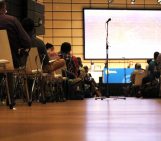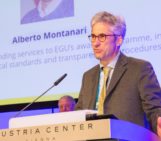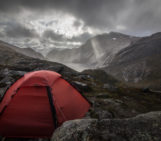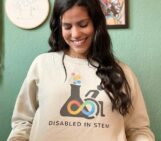
The Earth and space sciences, like many STEM fields, have long been dominated by a narrow vision of who belongs. But the tide is turning. A 2023 workplace climate survey of Earth and space scientists highlights both the persistent barriers queer and other historically excluded scientists face and the urgent need for cultural shifts within the discipline. The data is clear: the geosciences must now, more than ever, advocate for diversity and inclusivity not just in principle, but in practice. I recently came across the paper “Exclusionary Behaviors Reinforce Historical Biases and Contribute to Loss of Talent in the Earth Sciences” published by AGU’s journal Earth’s Future, and I couldn’t resist writing about it. Whether you consider yourself as someone who belongs to one or more marginalised groups, or whether you’re on top of what I call the human hierarchical pyramid, I guarantee that you will learn a thing or two from this blog, so keep reading!
The Geosciences in particular, are rooted in white heteronormative masculine culture, and women, BIPOC folks, and queer people have been struggling to tackle “the old boys’ club” for centuries. Despite the crucial role these disciplines play in managing natural resources and mitigating climate change, they remain some of the least diverse fields in STEM.
Efforts to diversify tend to usually focus on one matter: Recruitment. But that’s just one piece of the puzzle. Diversity isn’t just about filling seats or checking a list—it’s about cultivating environments where all voices—regardless of gender, ethnicity, (dis)ability, or sexual orientation—are not only heard but normalized and valued. Because, let’s face it, a field that studies the vast complexity of the planet should be able to handle a little complexity in its own workforce.
The problem: A chilly climate for many
The authors of the paper state that STEM initiatives that focus solely on recruitment and individual professional development fail to account for the chilly or outright hostile environments many face. The “leaky pipeline” metaphor—often used to describe how historically excluded groups fall out of STEM at various stages of their careers—only captures part of the issue. The real problem isn’t that people are slipping through the cracks; it’s that they’re being actively pushed out by systemic barriers.
A comprehensive workplace climate survey distributed to five professional organizations in the geosciences revealed the contrast between the experiences of different groups. While most scientists report positive interactions at work, those from historically excluded groups—women, non-binary and transgender people, scientists of colour, and LGBQIA+ scientists—encounter higher rates of negative interactions. These range from interpersonal mistreatment to overt discriminatory language, and even sexual harassment. Geoscientists of colour were more likely to have their work devalued than their white counterparts, and more than half of these minoritised scientists experienced identity-based discriminatory remarks. Disabled geoscientists, too, were more likely to hear negative language related to their disability.
When it comes to sexual harassment, historically excluded groups faced the highest rates. Non-binary scientists reported a staggering 51%, LGBQIA+ scientists 33%, disabled scientists 26%, women 20%, and geoscientists of colour 17%. These numbers are more than just statistics—they represent the lived experiences of real people who love science but are forced to navigate a toxic culture that often undermines their presence and contributions.
The patterns we can’t ignore
Previous studies in the geosciences have documented the frequency of discrimination and harassment in the field. In the early 1980s, surveys found that 50% of women geoscientists reported having experienced discrimination. By 2013, there had been no improvement: 51% of women experience sexual harassment (Archie & Laursen, 2013). Recent surveys have expanded this scope to include race, disability status, and sexual orientation, consequently revealing the widespread disparities in the experiences of historically excluded groups.
The ADVANCEGeo Partnership, funded by the U.S. National Science Foundation ADVANCE program, conducted the largest, most comprehensive workplace climate survey in geosciences. Over 2,000 respondents participated, and the results clearly show that exclusionary behaviours are rampant across the field. By focusing on career stage, gender, sexual orientation, disability status, and race/ethnicity, this survey provides critical data that can help us understand how these systemic issues play out in real time.
But the issue runs deeper. It’s not just about who gets recruited—it’s about who stays. The survey revealed that many respondents, particularly those from historically excluded groups, actively avoided colleagues or considered leaving their institutions or careers altogether. More than 30% of those surveyed considered opting out of professional activities, which can carry severe professional consequences, like losing out on key networking opportunities, mentorship, and advancement. And let’s be clear—this isn’t a case of “not being tough enough.” It’s a case of not wanting to endure unnecessary hostility in a field that should be driven by curiosity and collaboration, not gatekeeping.
The myth of meritocracy: It’s not just about working harder
One of the biggest myths in STEM is that meritocracy alone will fix these issues. The belief that “science speaks for itself” conveniently ignores how systemic biases shape whose work gets valued, whose voices get heard, and whose contributions get erased. Women and scientists from marginalised backgrounds have long been subjected to additional scrutiny, dismissed as not “fitting the mould,” or tokenised rather than truly supported.
The assumption that good work naturally rises to the top ignores the well-documented disparities in mentorship, grant funding, and career progression for historically excluded groups of people. If we truly believe in advancing scientific excellence, then we need to acknowledge and dismantle the barriers preventing talented researchers from thriving.
On building inclusive spaces
We can’t keep building a pipeline that leaks: It’s time for a paradigm shift. If we are serious about diversity and inclusion in the geosciences, especially that many of us are now under attack in many parts of the world, we must create workplaces that are not just tolerant, but actively supportive and proactively implementing policies that support the thriving of all geoscientists, not only the ones that fit normative criteria. This means:
- Changing the culture to embrace a broader definition of who can be a geoscientist.
- Nurturing environments where everyone, from students to senior researchers, feels welcomed, valued, and safe.
At the institutional level, this means rethinking how we hire, fund, and mentor scientists. It means making sure that diversity statements are backed by action. It means implementing clear policies against harassment and discrimination, with accountability mechanisms that actually work. And it means recognising that diversity isn’t just a “nice to have” but a necessity for better science. Diverse teams produce better research outcomes (Hong & Page, 2004), and the geosciences will be stronger when they reflect the full breadth of human experiences and perspectives.
At the individual level, it means being an active ally. If you hold privilege in this space, use it. Amplify the voices of colleagues from marginalised backgrounds, cite their work, mentor them, and advocate for structural changes that benefit everyone.
Diversity isn’t just a “check-the-box” exercise—it’s a mindset, a lived experience that enriches our work and our field. As one queer scientist aptly put it, diversity shouldn’t just be something we recruit—it should be something we celebrate. And that celebration starts with creating spaces where diverse identities are not just tolerated but embraced.
Because when we do this, we won’t just see more people joining the geosciences—we’ll see an explosion of new ideas, representation in the classrooms and the labs of who can also embark on an STEM journey, novel perspectives, and innovations that will move the field forward.
After all, as any good geoscientist will tell you, the Earth is a complex system of interconnected forces—and so too is the scientific community. Do not play a part in taming it.




